Welcome to A Wild Green Heart. Sunny springtime blessings to you all! Today is my May report from Pomona Strand, my beloved local urban wild space; a place of refuge for me, and source of much magic.
I love the month of May, and this one has been beautifully warm and sunny here in Manchester. The wildflowers are blooming, the insects are abundant, the birdsong is reaching its crescendo, hatchlings are everywhere. So how has all this unfolded at Pomona?
Before getting into all the wildly wonderful manifestations of May, let me introduce the latest artistic expression of Pomona Strand:
Becoming Kingfisher
I wrote in February about making a new enquiry with Pomona: “How do you want me to express you to the world next?” The two key responses I received from this sacred place were: firstly, this needs to be a collaborative piece of work (my previous expression was a solo show last June). And secondly, a story, given to me by Pomona, which I've been telling back to the land and its creatures, and to a select group of friends. The feeding that each person has given the story has helped me to refine it into a shape that feels fitting for the project.
So, Becoming Kingfisher is a collaborative venture, in which invited artists respond to their own experiences and feelings about Pomona, and to hearing the story told on-site - while sitting or standing in key locations, and while walking between them. The story operates at several levels - it's very personal, and specific to me and to Pomona; but is also about something much bigger. It operates at historical, systemic, and mythological levels, and I'm fascinated by the different things people focus on or receive from hearing it - just like any good story.
Starting point for the story journey
I've told it a few times in other contexts and, so far, to three of the artists involved in the project. Other than the story and the connection to Pomona, I'm giving no further guidelines for participation. My approach to art is highly relational, and I'm more interested in the connection and deepening of friendship than to any other element. There are no timescales and no projected “outcomes”. For example, one person invited to take part is super busy for a few months, and can't even consider the project until at least August. This is entirely welcome, and helps me to know I'll be living inside this story and this project for a good long while yet. Slowness, emergence and relationality are hallmarks of this venture.
However, I'm also delighted to say that one artist, who visited Manchester in early May, has already completed his response. L-127 has many creative practices, but it’s his work on walls with spray paint that was his focus for this project. It's an on-site response at Pomona, specifically on one of the walls surrounding the lock.
L-127 at work
The lock is already home to several large graf pieces, as well as many smaller tags and throws. A wall that had been painted but subsequently defaced provided the perfect location for his response. After telling the story, the two of us sat and contemplated it a while, before selecting an appropriate word to write large in response. The chosen word was WILD. I hope you agree that it looks absolutely splendid here, captured later in May when the evening sun was falling on it.
Wild not-wild-style!
L-127 left his mark elsewhere, and he may have even persuaded a certain someone to pick up a spray can for the first time in his life and have a go…
I'm excited to see what other responses emerge over time, as other invited participants respond to their experience of hearing the story and connecting with Pomona in their own ways. I will be sharing them on here as and when appropriate.
Meanwhile, here are some of the other significant beings I've seen and interacted with at Pomona during May.
Goslings
I have to start with the geese and their goslings, because at times I've been practically falling over them at Pomona. I wrote in previous months about the geese pairing up, defending territory, and building their nests in creative places. But this month is all about the babies, and they seem to be everywhere!
I've seen pairs of adults with anywhere between one and six goslings, wandering about on Pomona, and taking short paddles around the edge of the water in Magic Pool and in the canal. They're not yet ready for the deeper waters and stronger currents of the Irwell. At times I've walked unwittingly close to the little yellow fluffballs, and have only realised when a protective parent has hurried in my direction, hissing madly. They really are remarkably camouflaged in the undergrowth. When I've been sat too close to a family, I've enjoyed observing the adults walk to a safe distance to stand watch, while the goslings have disappeared into deeper undergrowth and later re-emerged right next to their parents. It's amazing how they know exactly what to do for their own protection at such a young age!
Wildflowers
May is the month in which the wildflowers flourish in great variety and abundance! Among the earliest to appear at Pomona are the great clusters of bird's-foot trefoil, as seen here:
Now they are accompanied by ox-eye daisies, bird vetch, buttercups and the glorious lupins.
Along with these, there are plenty of other blooms, including dog rose along the canal, and bramble blossoms absolutely everywhere.
Dog rose flower
I feel like I also need to mention the marsh orchids. Two years ago the body of Pomona was covered with them in late spring. Then, after the cutting of growth and churning of the earth by machinery in January 2024, I found only a handful last year. This year there are none at all on the body of Pomona. They also grow on the scrubby patch of ground near the locks, where so far I've managed to find only four small orchids. The land is increasingly covered by brambles, which is probably preventing more from emerging. They're just gorgeous though, aren't they?
Insects
All these blooms are naturally attracting pollinators, and I'm delighted and encouraged by how much insect life I've seen at Pomona this month. Firstly, various types of bees, like this one on a bramble blossom:
More surprising to me are the amount of butterflies I've seen already this year, mostly cabbage whites and common blues. I don't recall seeing so many blue butterflies in recent years, though maybe my it's my attention that is sharpening. If you're not familiar with them, you'll see below that the outside of their wings, though not blue, are equally striking due to the beautiful patterns they bear. They're buggers to photograph though - they rarely seem to rest for very long, and appear to be very aware of a human being close to them.
I've also seen other insects around, including several of these dazzling little beasties:
This beetle, Oedemera nobilis, is also known as the false oil beetle, thick-legged flower beetle or swollen-thighed beetle. I'm going with the last of these as the most accurate description! They feed on the pollen and nectar of various wildflowers, including the ox-eye daisies.
Birds
I've already mentioned the geese, but there's been plenty of other birds at Pomona, large and small. Naturally I'm spending plenty of time watching the sand martins as they feed over the river, and disappear into their nest holes in the gaps between the concrete. It's one of my greatest joys of the spring and summer months. In May I've found myself visiting Pomona more frequently in the evenings as the days have become noticeably longer. As the sun begins to descend behind the ever-growing number of apartment blocks on the far side of the river, glorious shafts of light are created across Pomona's body.
Then there are all the other small birds hidden among the willows and other foliage. I mentioned recently that I've heard willow warblers several times recently, joining the chorus of wrens, robins, blackbirds and song thrushes. It's really quite captivating when they're all weaving their songs together on a bright morning or a sunny spring evening.
I've seen a kestrel hunting over Pomona many times this month, though only ever the one. It seems like the breeding pair I watched frequently at Pomona together a couple of years ago have moved on, or this bird has been unsuccessful in finding a mate.
Heron has been present numerous times in May as well, which always does my heart some good. I delight in watching them hunt stealthily for fish at the edge of the river.
As for Kingfisher - the title of the collective art project to express Pomona to the world, and the bird I feel most intimately connected to for the last twelve months - I've caught only one fleeting glimpse. I'm not too discouraged by this - last year I didn't see him at all until June, and that was followed by many incredible encounters with either one or a pair of kingfishers throughout the summer months. I'm sure they'll be back more often soon.
The Weather
Yes, yes, I know we Brits talk about the weather all the time, but it feels important this month. Because I don't think it has rained once so far in May. I have very conflicting feelings about this, because the warmth and sunshine have a noticeably positive effect on my fatigued body, boosting my mood and energy in equal measure. But it's really not normal for the north of England to not have rain for weeks on end in spring, and the land is showing signs of this lack of water. While much of Pomona is still covered in vibrant greenery, there are some dry, brown patches appearing, particularly where the only growing things were grasses. Nowhere is this more evident than at the Heart of Pomona:
The land urgently needs some rain, and even I'm wishing hard for it! The forecast is for rain over the weekend, so perhaps by the time you're reading this, it will already have arrived. Most of the green life at Pomona is thriving, and there are saplings growing rapidly all over the place - willows, birches, white poplar, oak. But there are signs that some of them are starting to struggle for life as well, and I've spotted some wilting, yellow leaves here and there. I've also noticed that the rest of the lupins, which grow around the edges of the concrete quay overlooking Magic Pool, have wilted and died before most of them had even had a chance to bloom. This is a source of some real sadness.
Deeper in the shaded edges though, other green beings are emerging among the leaf litter, including numerous varieties of fern. I love a good fern, me.
Humans
I don't usually talk much about the other humans I encounter at Pomona, but it's fair to say that, with the gap in the railings open, and the unseasonably warm weather, there have been many more people wandering at Pomona, even having barbecues. Don't get me wrong, I'm all for people having access to this wild and beautiful place, and enjoying themselves there. But for fucks sake, I wish they would put more priority on taking their litter home with them! My litter picking methodology of “one bag per visit” seems unable to keep up with the amount of detritus being left behind lately, which is very disheartening.
To add to that, there are clearly people injecting heroin on a regular basis at Pomona. I hold absolutely no judgement against people using hard drugs: they are rarely doing so because life has been kind to them. They need safe places to inject, and our cities fail them spectacularly on this front. But a prevalence of needles makes for hazardous picking, and I'm probably going to need to invest in some specialist equipment if I want to tackle those areas safely. But the worst affront came today, when I discovered this mess at one of my most sacred places at Pomona:
Thankfully there were no needles - I checked carefully - but all the other paraphernalia was present: packets of citric acid, antiseptic wipes, pieces of tinfoil, empty needle packets.
Thankfully my most sacred place of all is tucked much further back in the undergrowth, and is far too difficult to access for people simply needing somewhere to inject without being observed. Long may it remain hidden from all other humans! It really is such a peaceful spot, tucked away, and granting me a wonderful space for times of prayer, ritual, and sending blessings to friends of all species.
That's all for this week. I'd love to hear from you in the comments. How has your May been? What plants and creatures have you observed? What's your favorite part of May? Have you had any rain?!


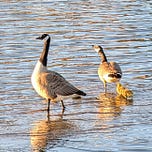


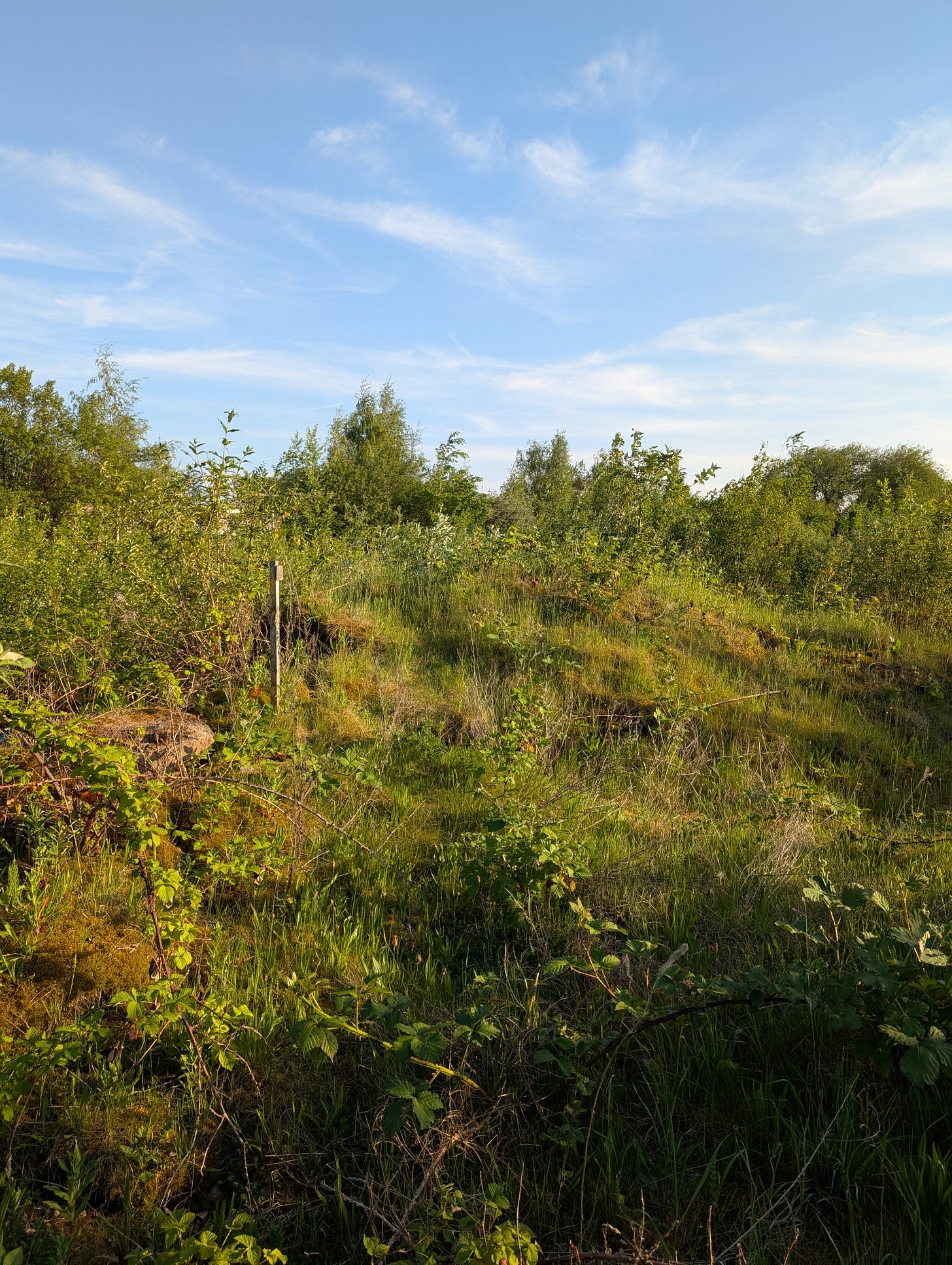
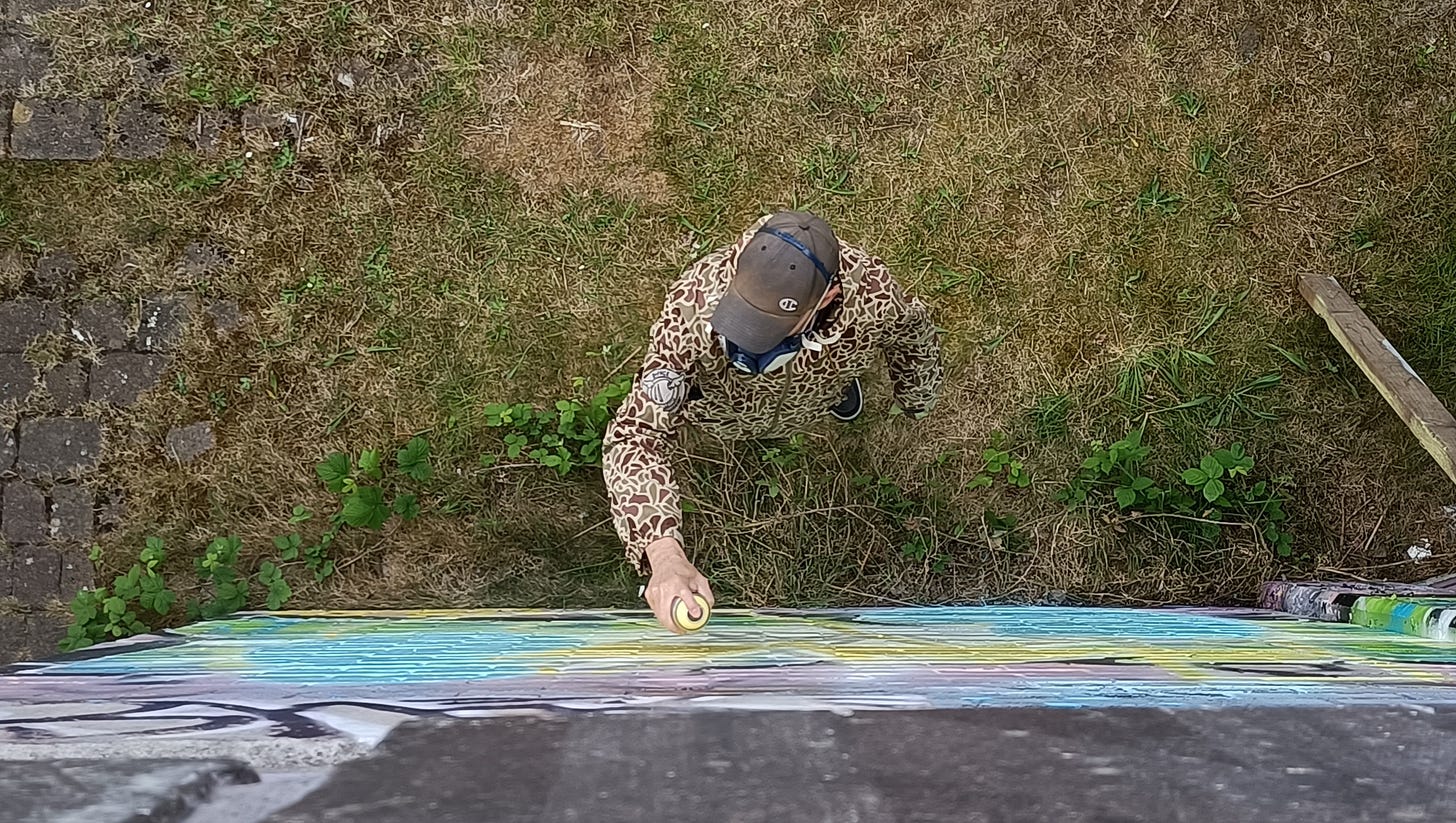
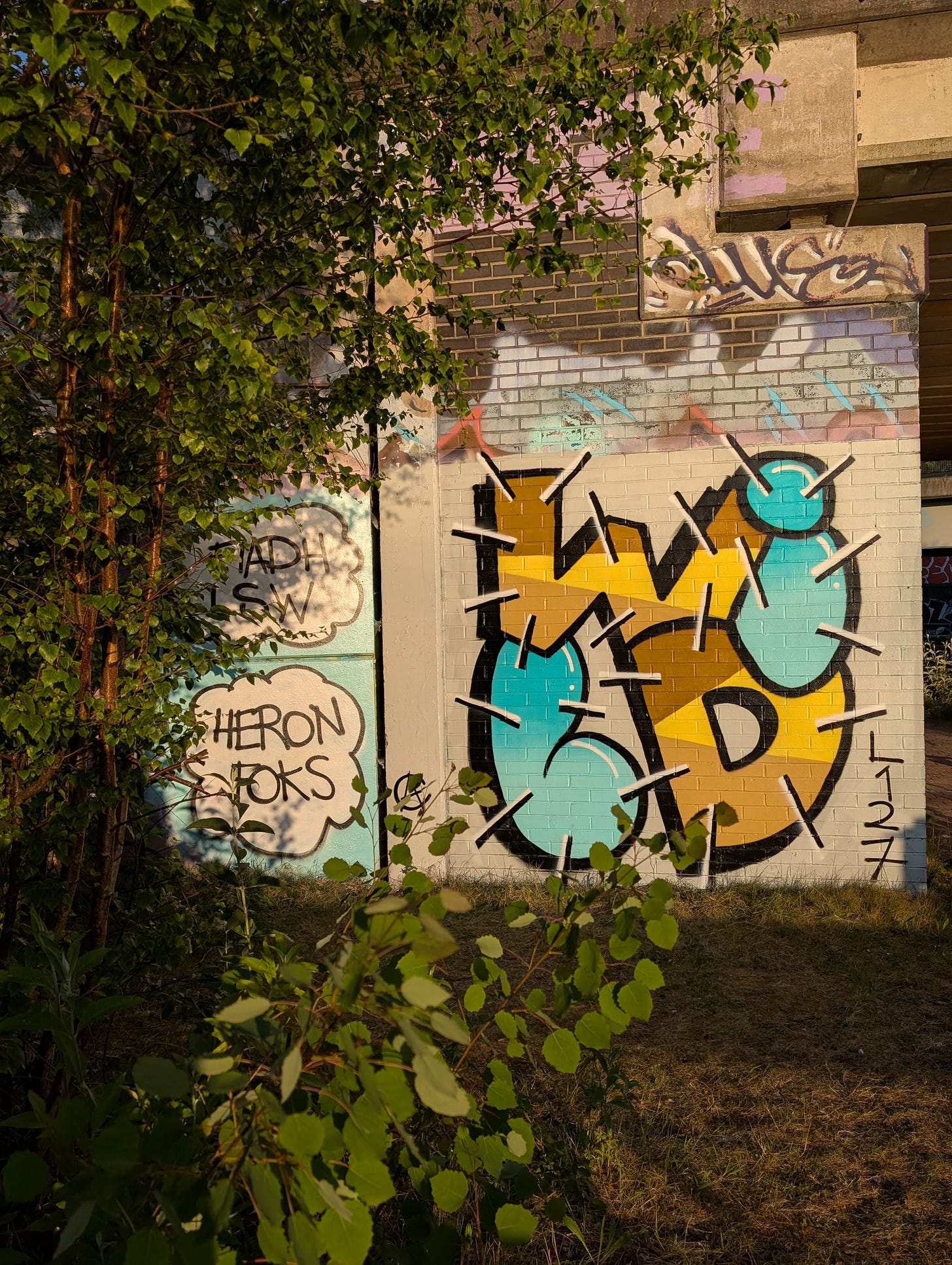
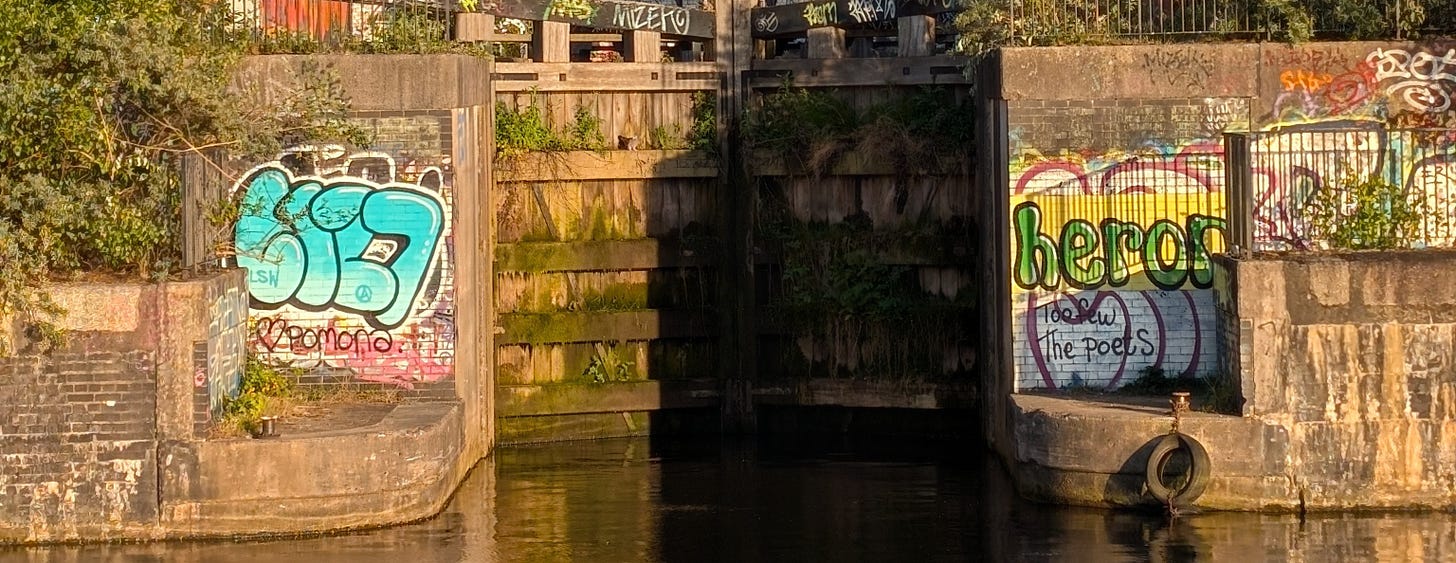
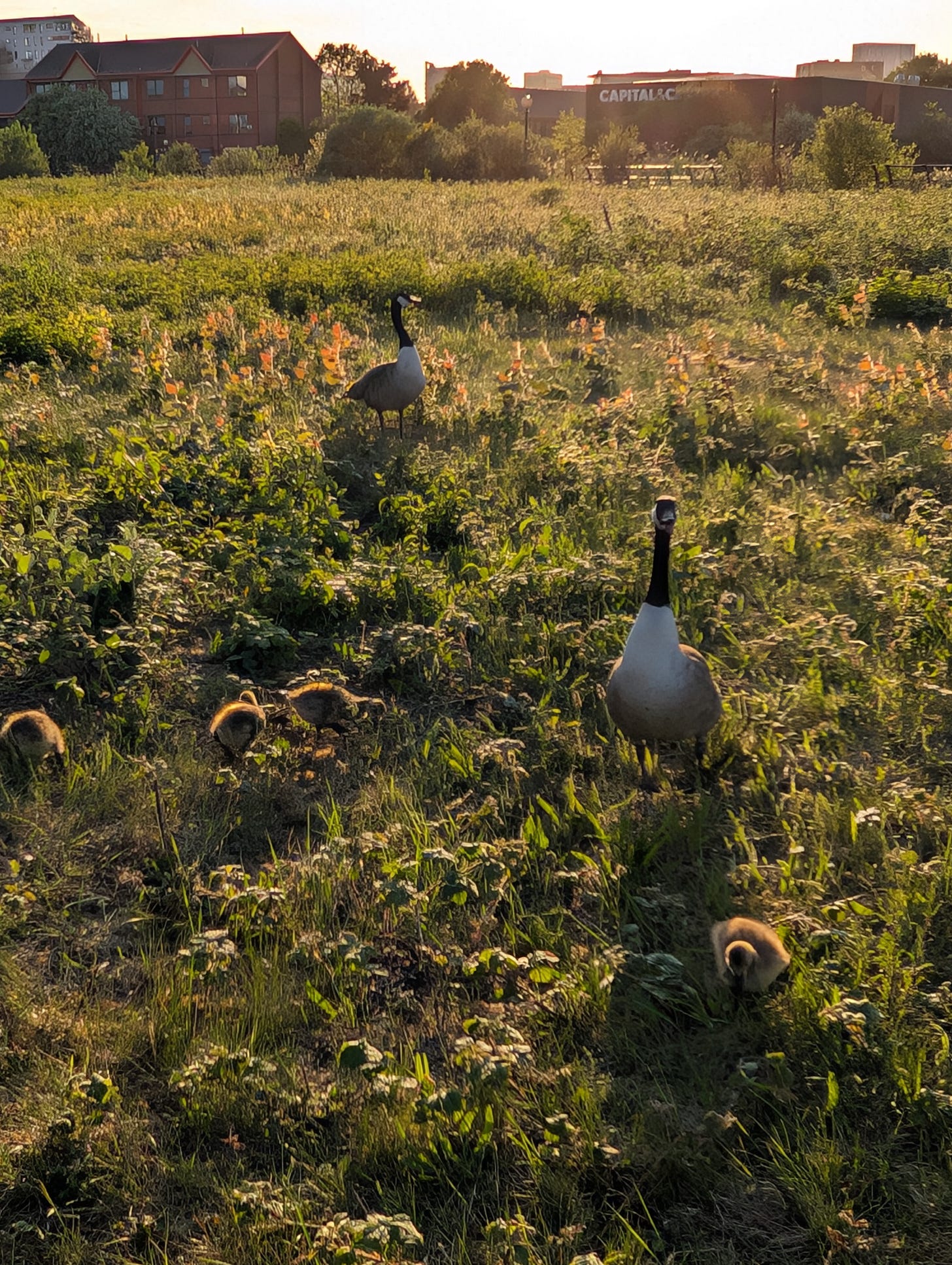
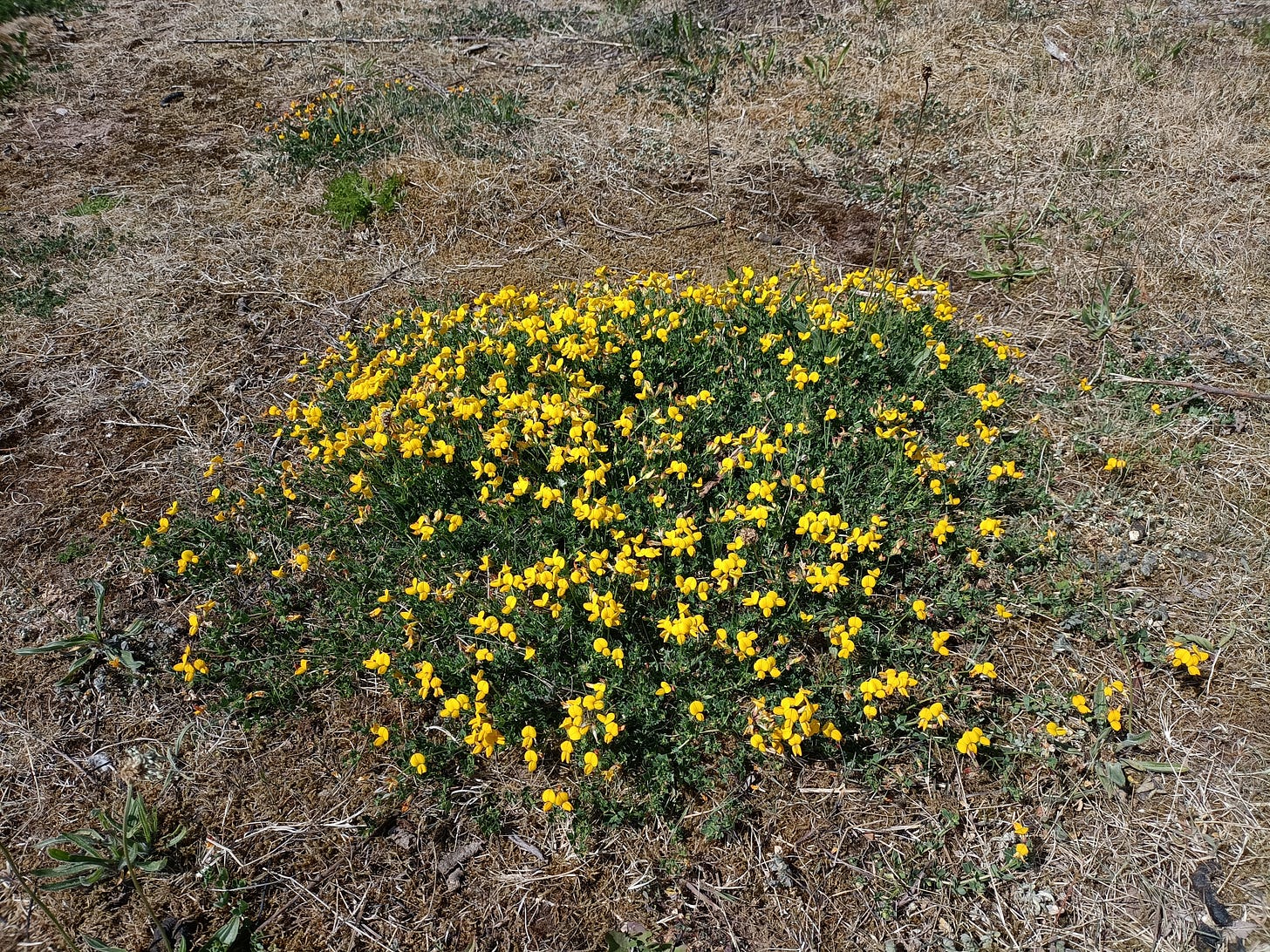

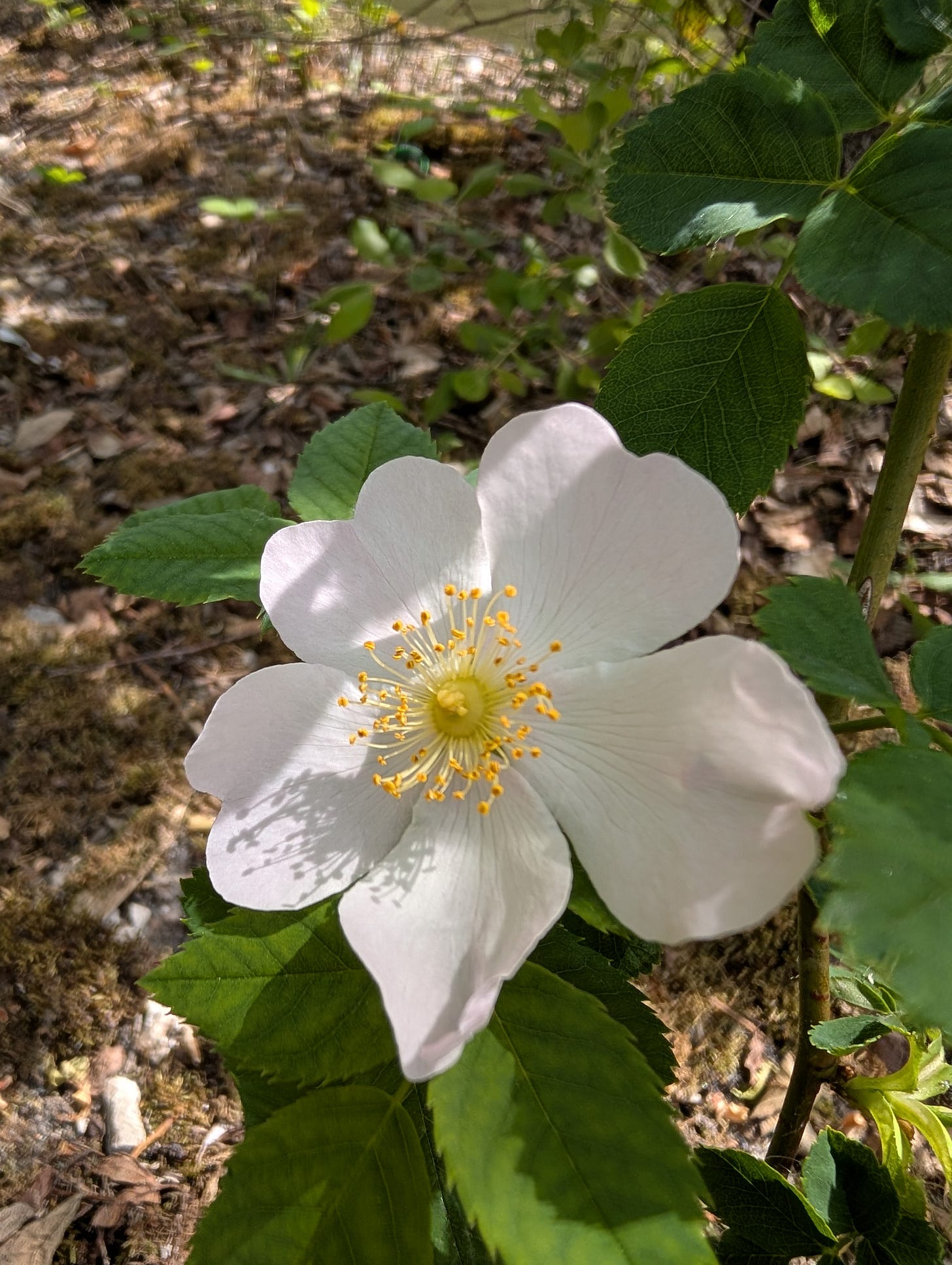
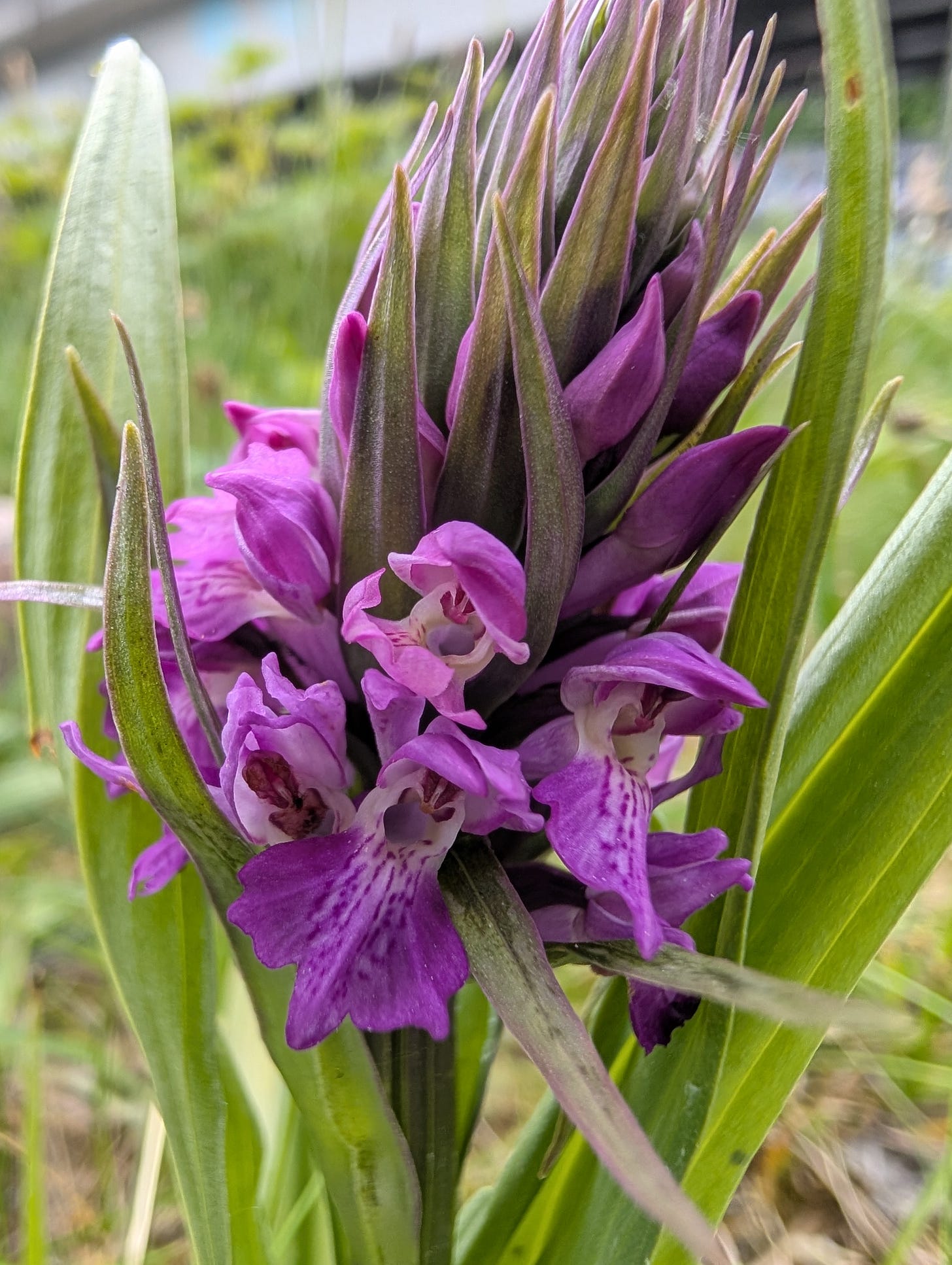
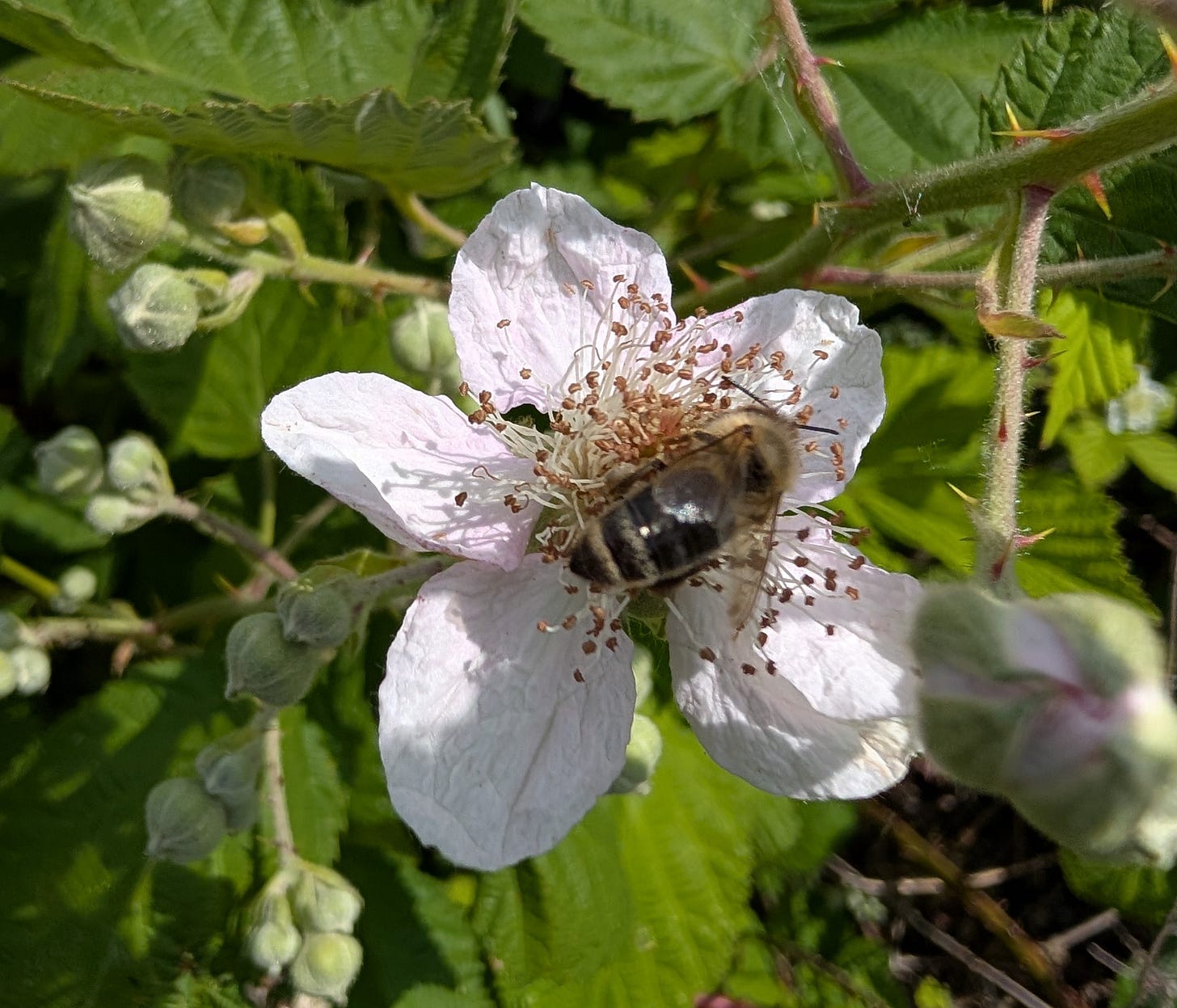
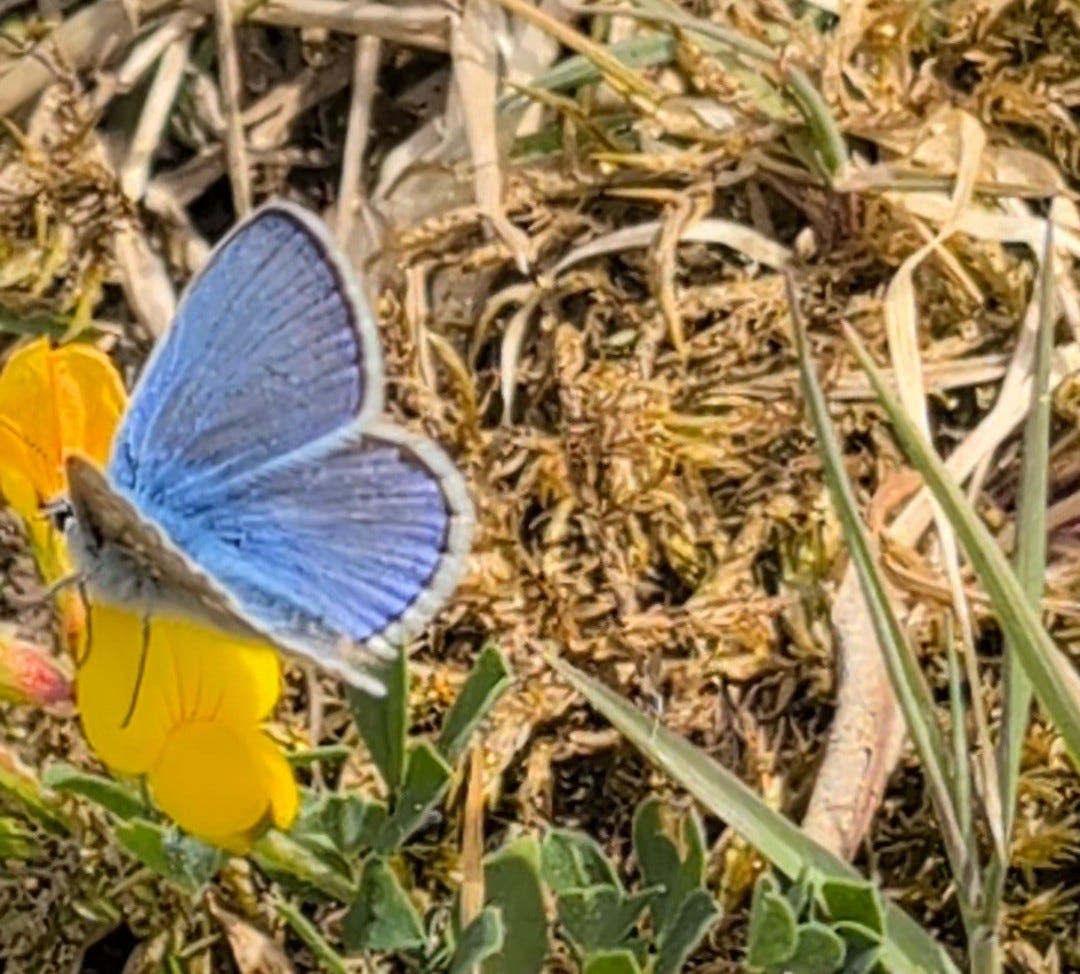
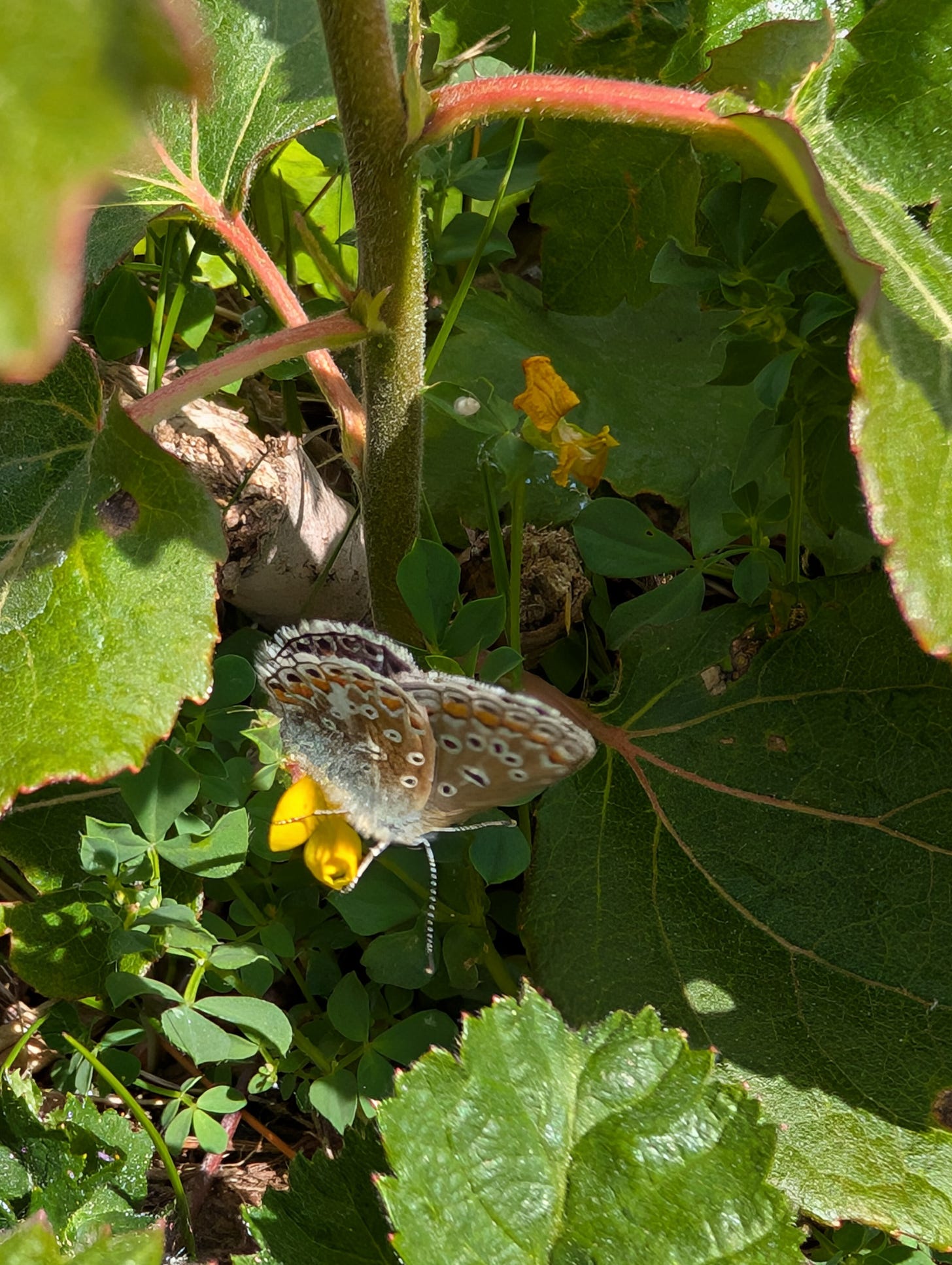
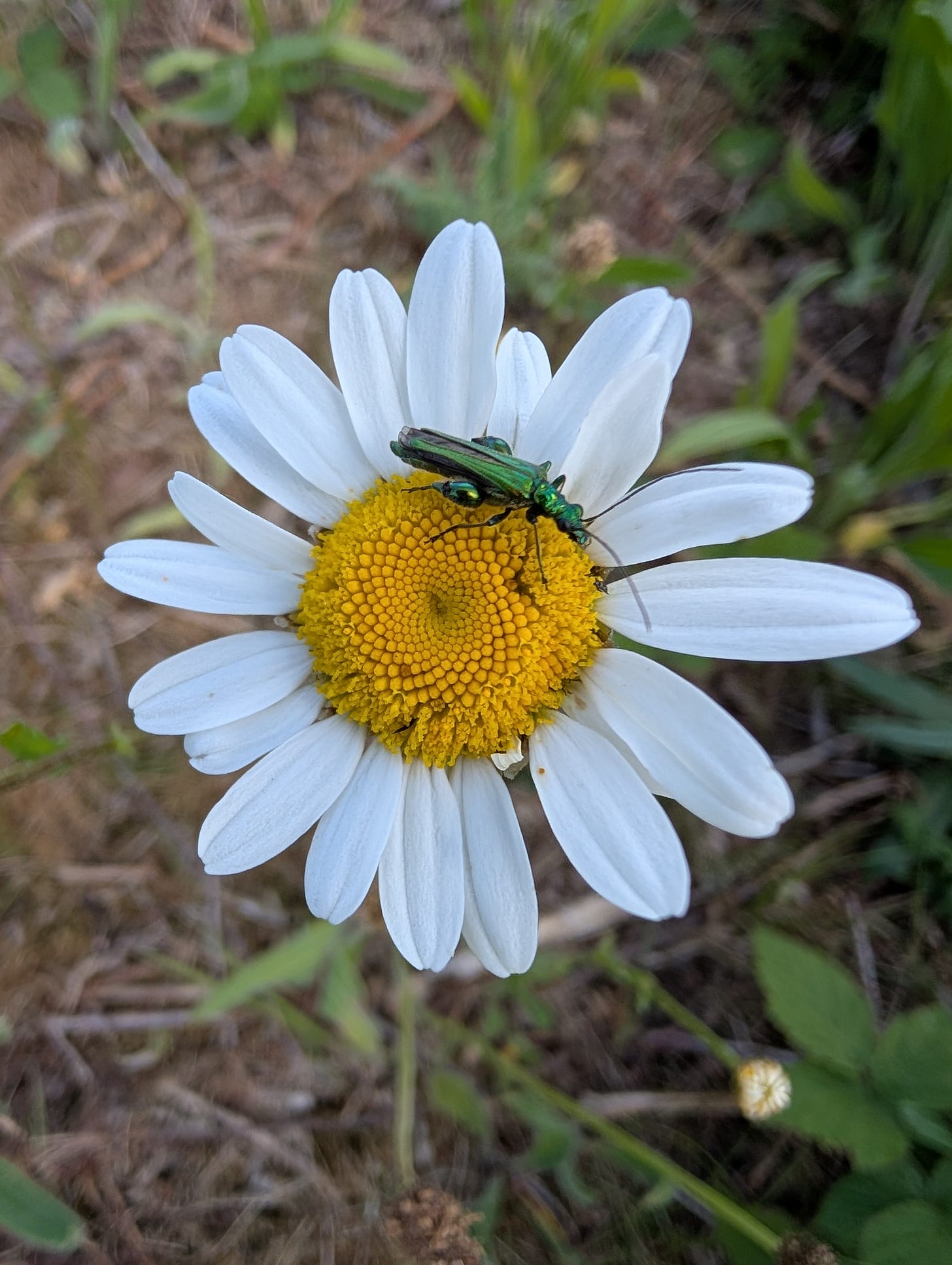

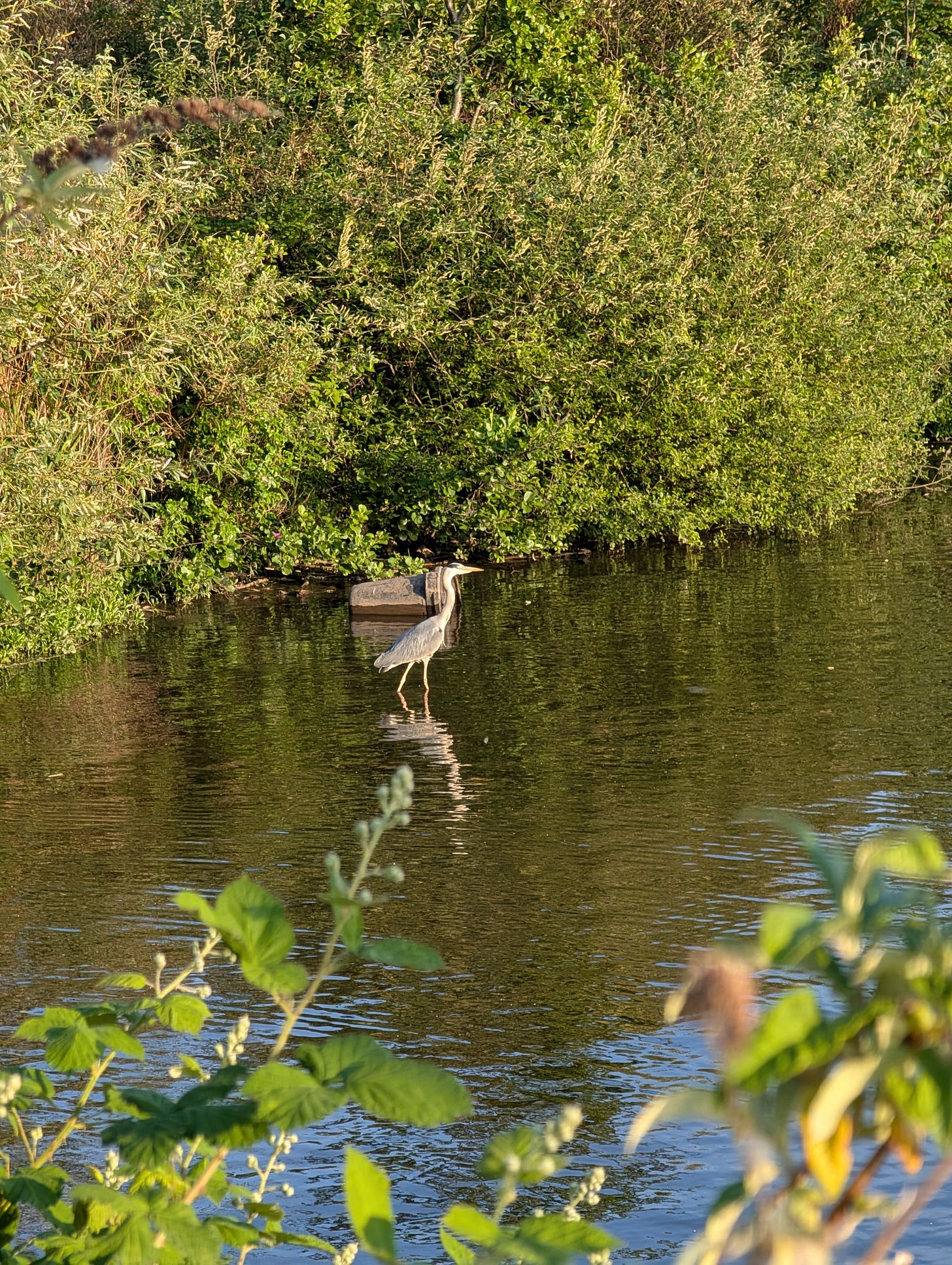
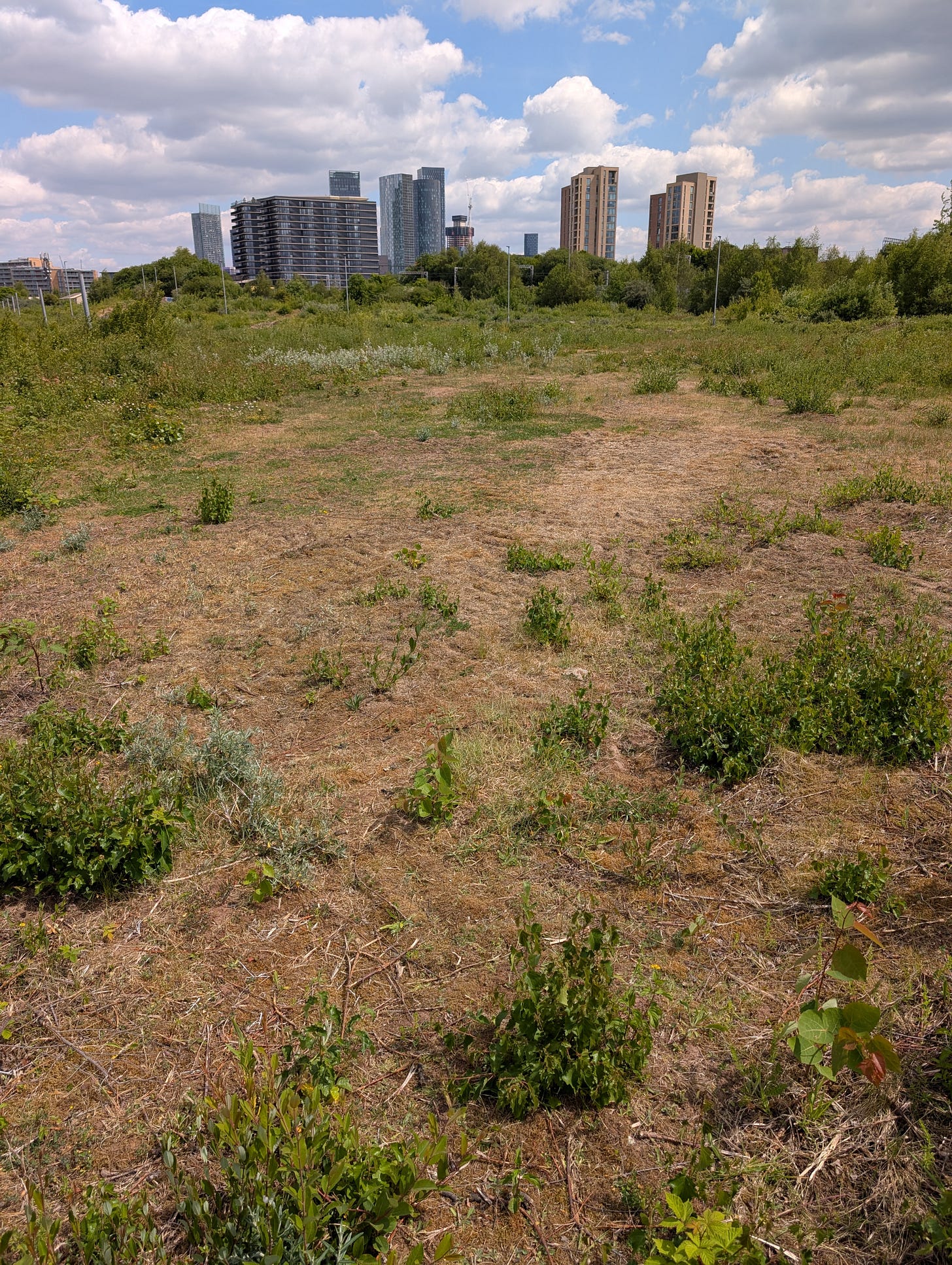
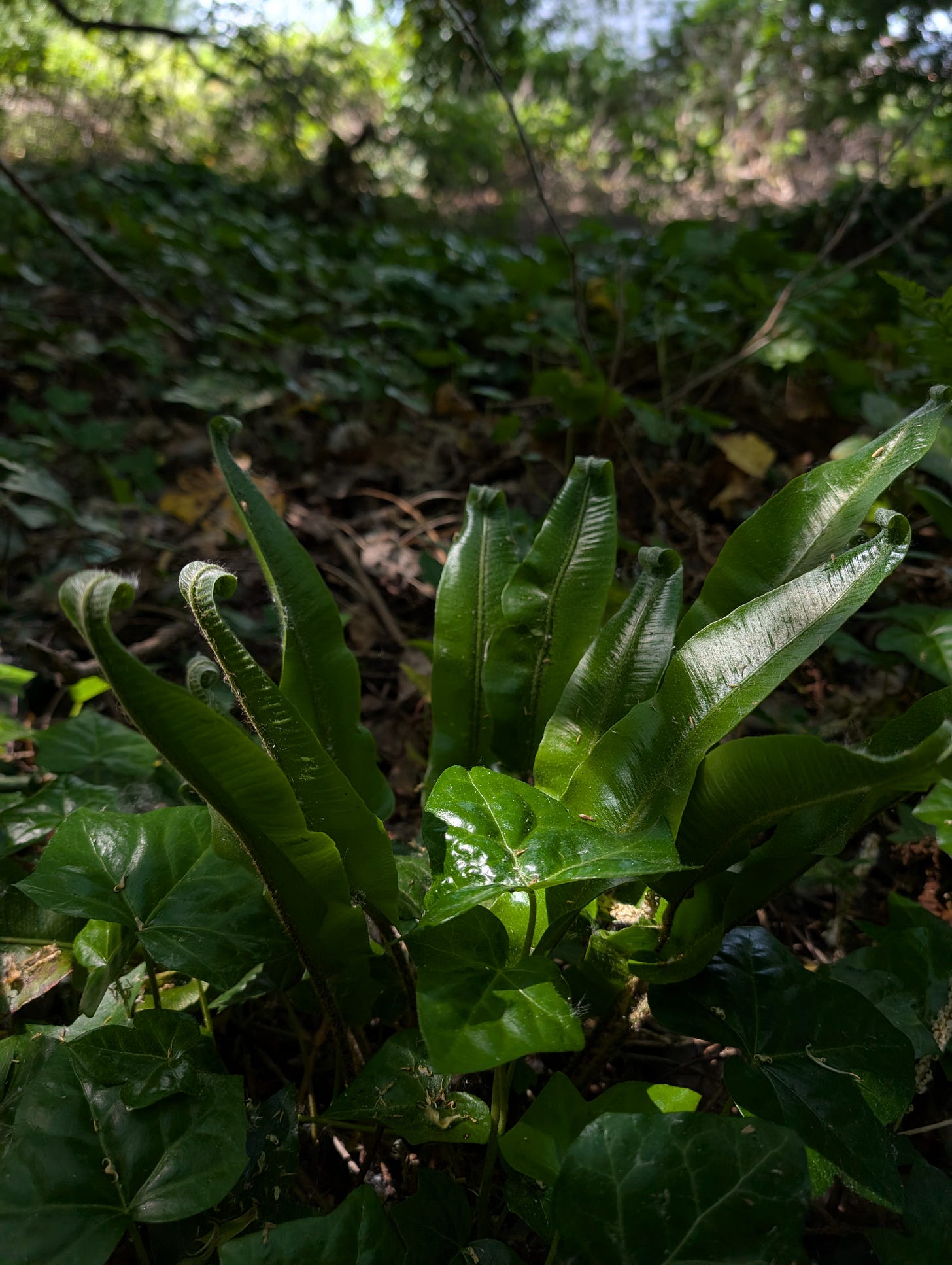
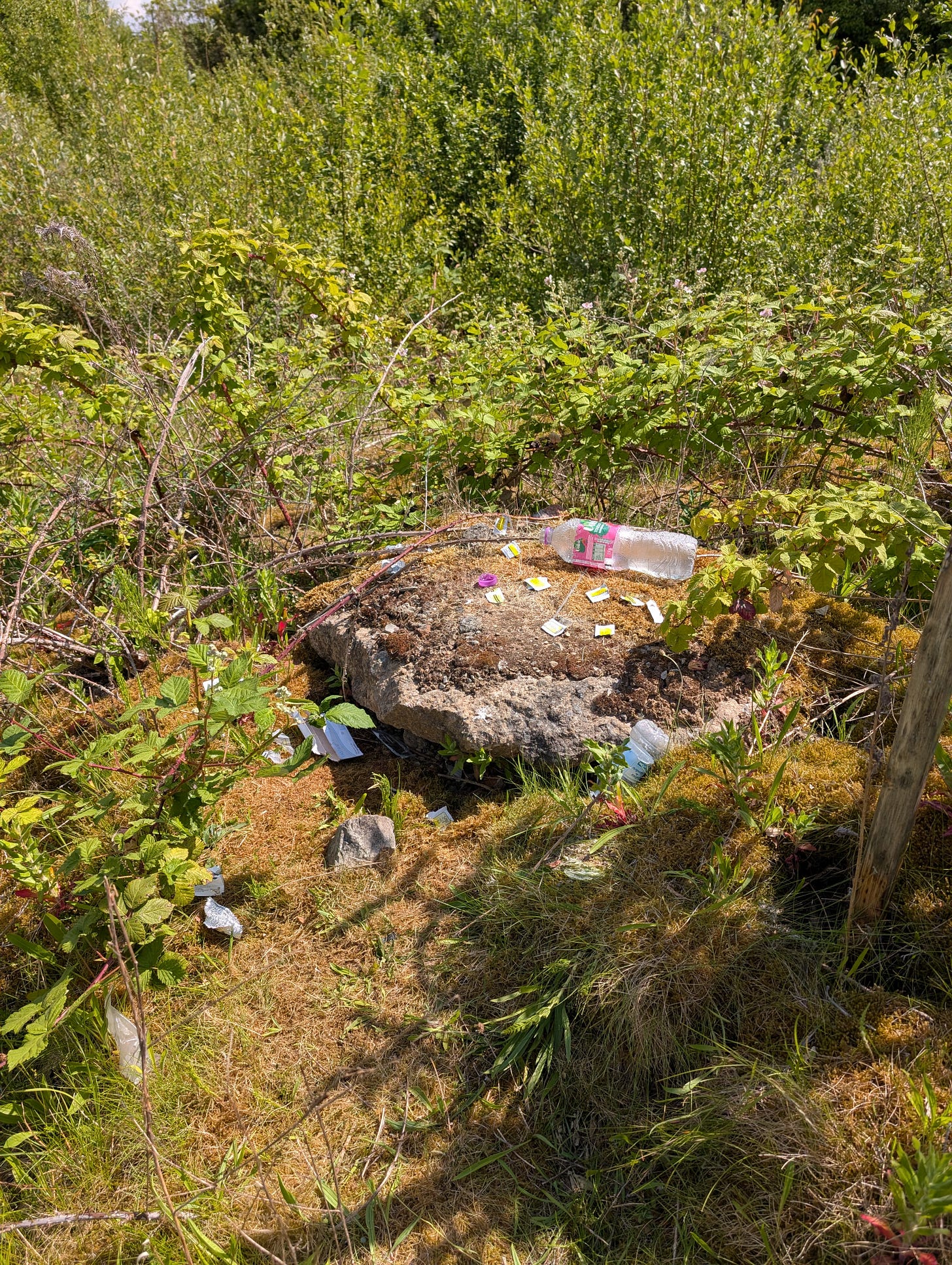
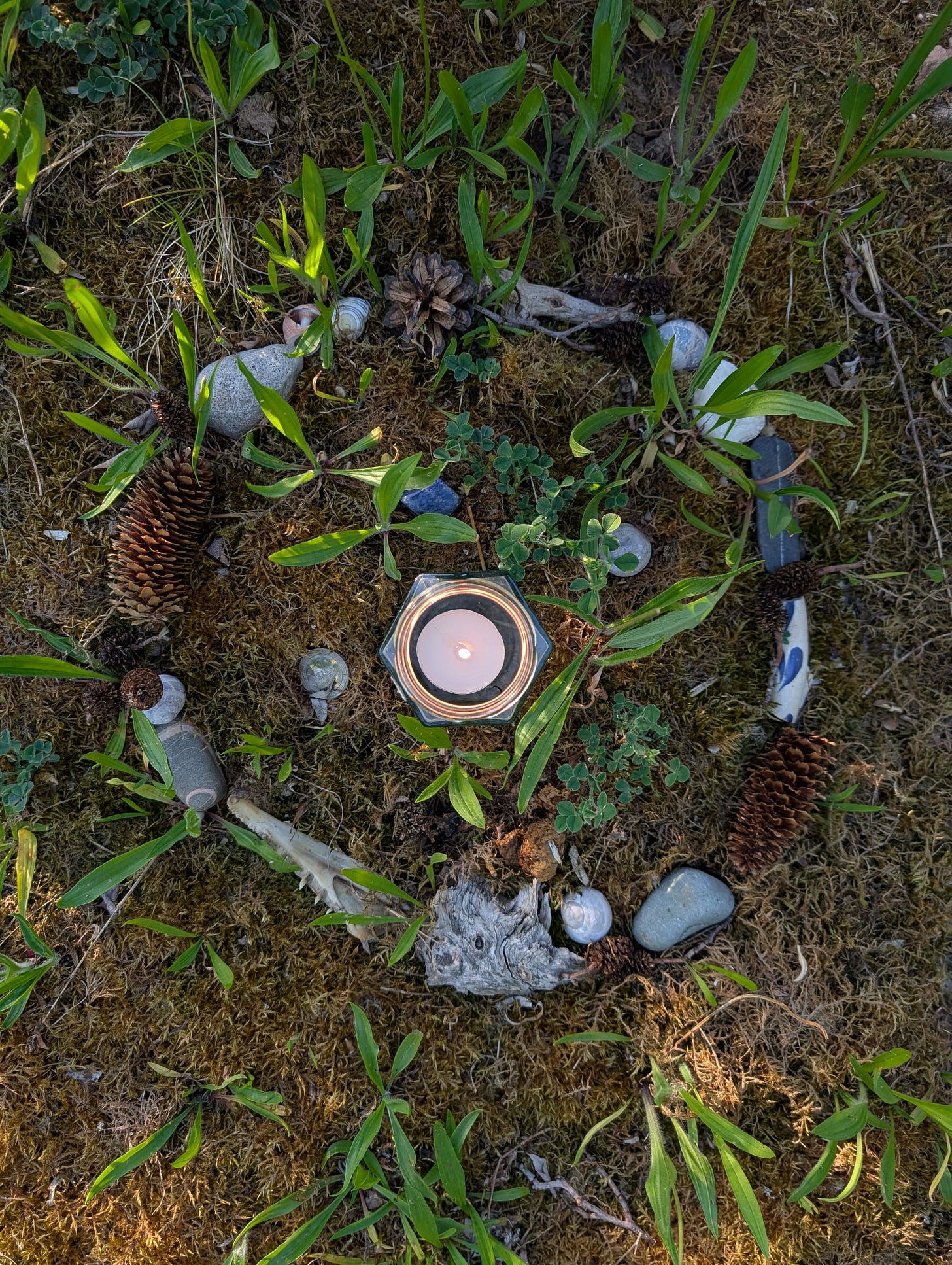








Share this post